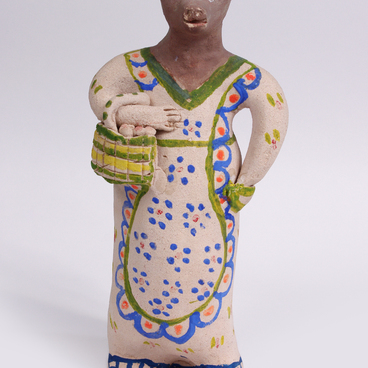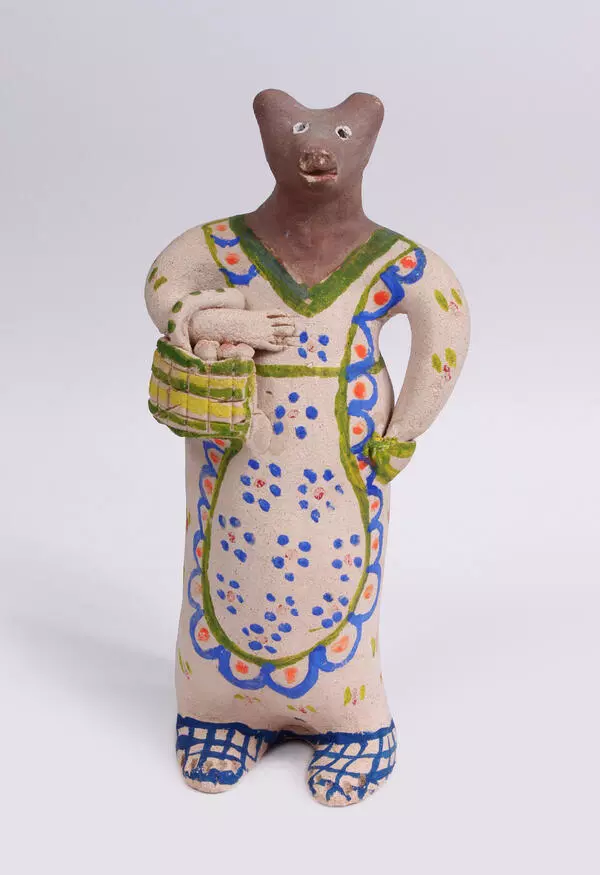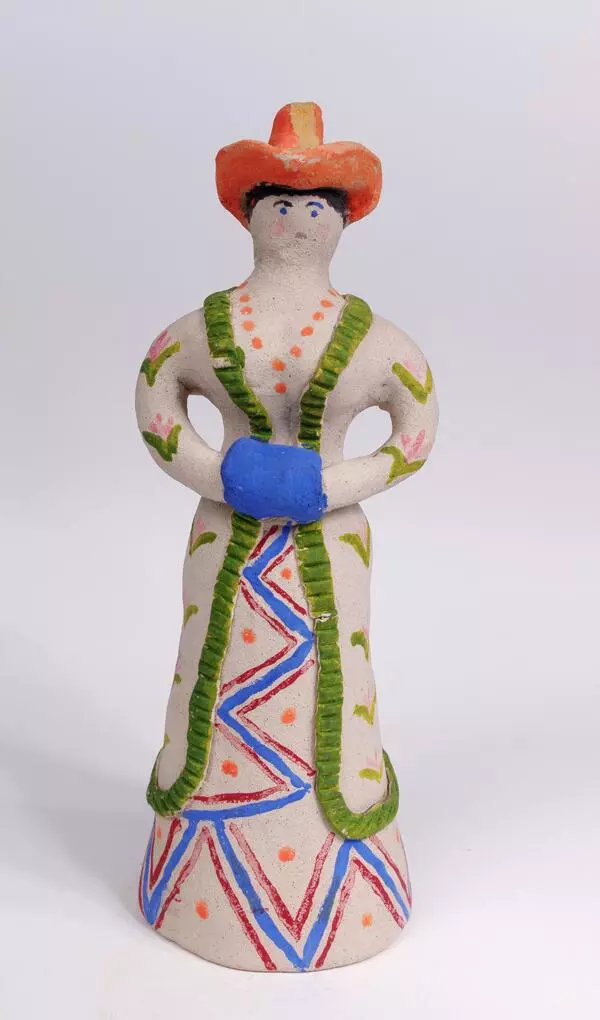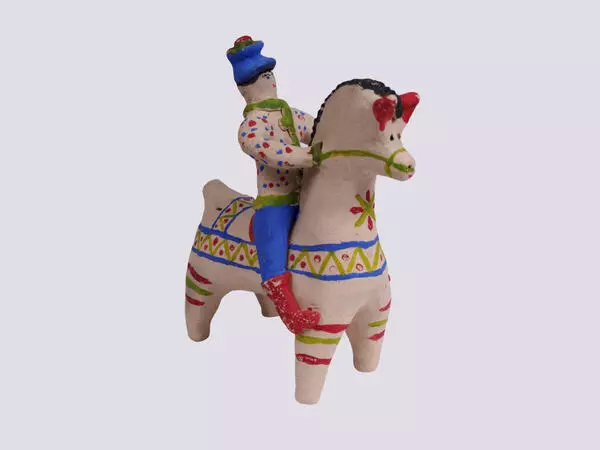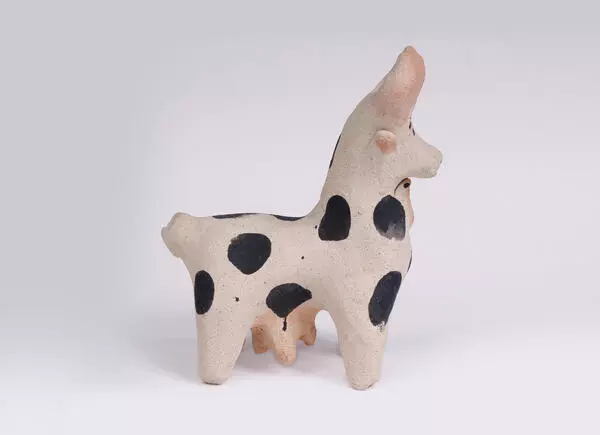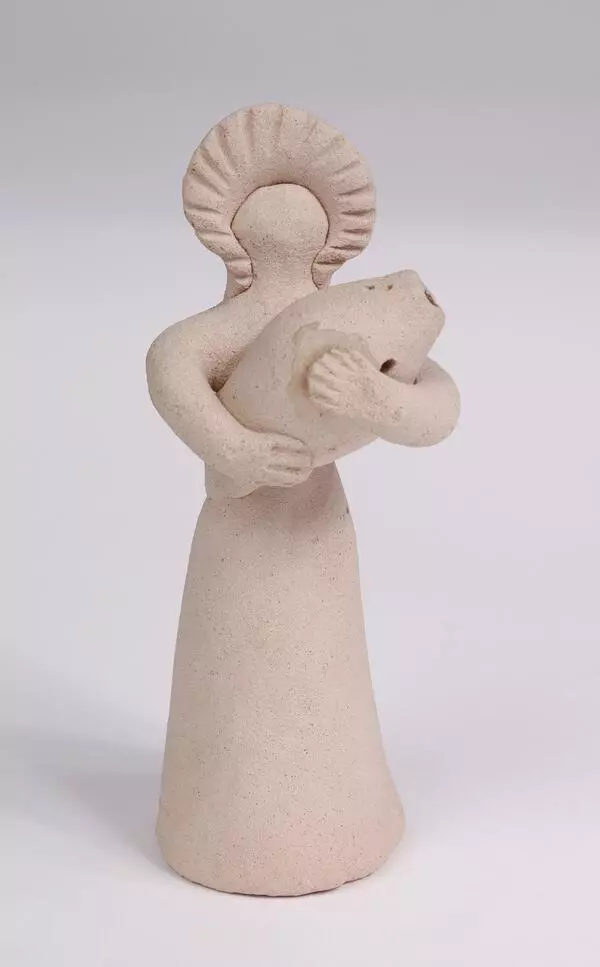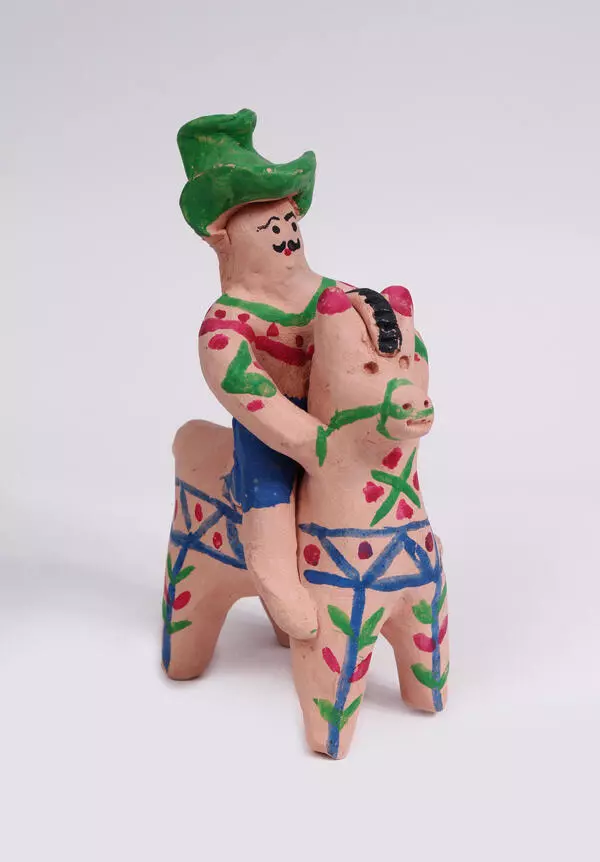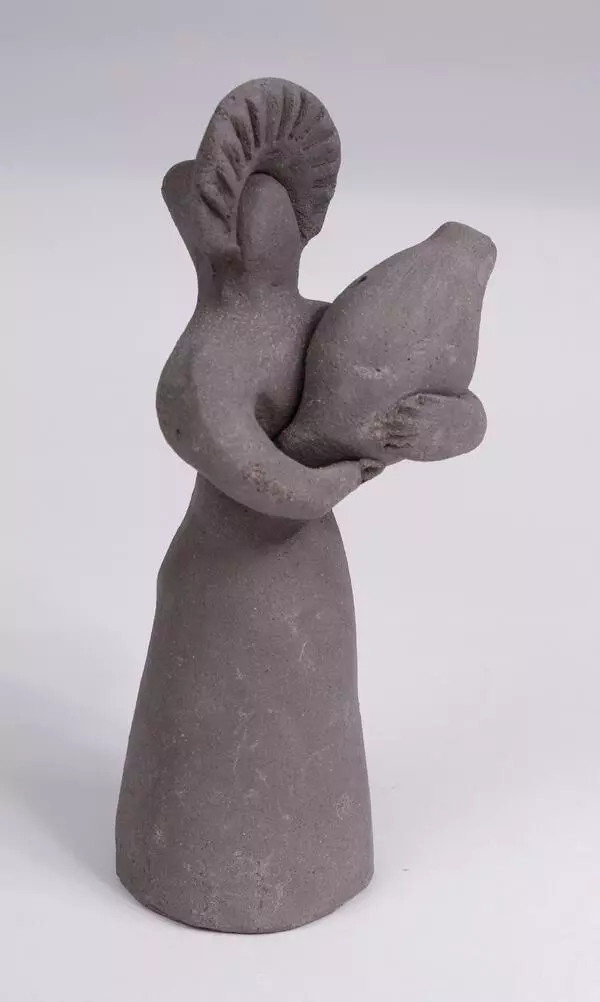The ‘Duck’ figurine was made by the Goncharova sisters in the traditions of the Stary Oskol clay toy. Such figurines usually had whistles.
It was necessary to leave an empty cavity, a resonator, inside a whistle for it to produce a beautiful clear sound. For duck-shaped whistles, craftswomen used the technology called ‘carrot’ to form such a cavity. First, they removed small unnecessary particles from the clay and formed a dense ball out of it. Then it was used to make a large ‘carrot’ — a cone for the future toy’s body. A cavity, which was as long as half the height of the toy, was made in its lower wide part. The cavity was also formed like a cone. The top of the “carrot” was bent in two places, forming the neck and head of the toy. Then the craftswomen closed the wide bottom of the toy. They pulled the clay from the edges and formed a mouthpiece that was brought to the lips while playing the whistle. After the toy slightly dried, all the necessary slots were made in it.
The Goncharova sisters experimented a lot with the coloring of birds. Most often, they painted a zigzag line with dots along the toy’s body. The comb, legs, and wattles were painted over completely in one color. Sometimes the paint covered these elements only partially. A ‘chicken’ usually had one wattle, while a ‘rooster’ had two. Very rarely, as in the traditional painting of a lamb, two twigs were painted on a bird’s sides. The toy from the museum’s collection has them as well. Usually, a solar sign was depicted on a duck’s chest. It symbolized the sun and joy of life.
When Natalia Goncharova was already well into old age, she left a short note for her fellow artisans. The words in this note reflect the very essence of the Stary Oskol toy, as well as carry with them a kind of instruction to those who intend to keep the toy traditions alive. The craftswoman Natalya Nikishina quoted the note in her publication:
It was necessary to leave an empty cavity, a resonator, inside a whistle for it to produce a beautiful clear sound. For duck-shaped whistles, craftswomen used the technology called ‘carrot’ to form such a cavity. First, they removed small unnecessary particles from the clay and formed a dense ball out of it. Then it was used to make a large ‘carrot’ — a cone for the future toy’s body. A cavity, which was as long as half the height of the toy, was made in its lower wide part. The cavity was also formed like a cone. The top of the “carrot” was bent in two places, forming the neck and head of the toy. Then the craftswomen closed the wide bottom of the toy. They pulled the clay from the edges and formed a mouthpiece that was brought to the lips while playing the whistle. After the toy slightly dried, all the necessary slots were made in it.
The Goncharova sisters experimented a lot with the coloring of birds. Most often, they painted a zigzag line with dots along the toy’s body. The comb, legs, and wattles were painted over completely in one color. Sometimes the paint covered these elements only partially. A ‘chicken’ usually had one wattle, while a ‘rooster’ had two. Very rarely, as in the traditional painting of a lamb, two twigs were painted on a bird’s sides. The toy from the museum’s collection has them as well. Usually, a solar sign was depicted on a duck’s chest. It symbolized the sun and joy of life.
When Natalia Goncharova was already well into old age, she left a short note for her fellow artisans. The words in this note reflect the very essence of the Stary Oskol toy, as well as carry with them a kind of instruction to those who intend to keep the toy traditions alive. The craftswoman Natalya Nikishina quoted the note in her publication:
